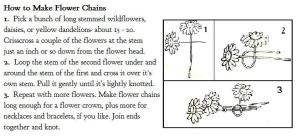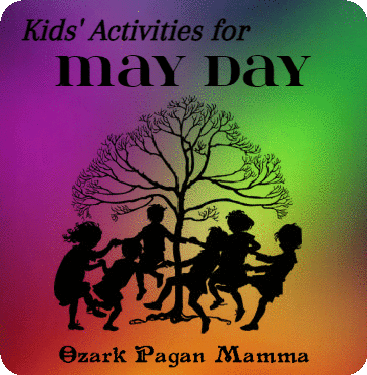The full flourishing of spring has come to the Ozarks, “High Spring” as some call it; May Day. Of all the flowers and fauna of the region, I would say that the Dogwood bloom embodies the season best, though we’re seeing the last of that flowering, as we roll up the path to summer’s door. Of course, we know that the Dogwood is the flower of Snawfus— our Forest King has ever-blooming Dogwood branches in place of antlers.
In looking at similar gods in cultures related to ours, we find Buschmops/Waldmops, the “Forest Dwarf” of Pennsylvania Dutch lore. He can turn himself into a white deer with gold antlers. He is also associated with snakes; a large horntail snake is his protector, and like our legend of the hoop snake, it curls around like an ouroboros and rolls to chase away intruders. I used to think this legend was unique to the Ozarks, but in Deitsch lore, a snake of this description defends their Forest King. Perhaps there is a lost connection to our Deer God as well.
In historical depictions, Cernunnos is depicted holding a snake in one hand. We don’t have original mythology for Cernunnos, nor even his actual name. His roles and symbols may have been absorbed by gods such as Lúgh and Odin. Elsewhere, he carried on in so many regional forest fairy traditions, scattered far and wide.
The consort of the Buschmops is a Fairy Queen named Schlangefraa, the Snake Lady. She is a healing goddess who uses herbs and plants. She carries a snake in her apron pocket and wields it like a wand to cast spells. The folklore also credits her with giving Brauchers (who were called Power Doctors in the Ozarks) their healing power. In her stories, she can transform into a rabbit and rise into the sky to become the morning star. Her fairy children were said to be born out of blue or green-shelled eggs.
Many of these traits may point to her origins as the Celtic Sironâ, a goddess depicted with a snake coiled around her arm and holding a plate of eggs, symbols of healing, regeneration, and rebirth. Evidence of her worship has been found mainly in Gaul and Germanic areas of Europe, so the legends of Schlangefraa may be a cultural memory of Sironâ. Her temples were constructed around thermal springs or wells; waters of healing. In our Ozarks culture, we find this idea of healing waters reflected in the custom of collecting May water and dew for healing and magic.
It seems fitting for the “Snake Lady” to fill a missing piece in an Ozark pantheon. Is it strange that it seems to me like she has always been there? Perhaps I’m thinking of the statue of Mary “Lady of the Smile” at that little old church in Brentwood. Though the depictions of Mary with a snake all have the snake under her feet like she’s defeating it. However, when you look closely at some of these, the snake doesn’t seem harmed at all. There’s also stars around her head, adding more of the Snake Goddess imagery. I think there’s something to the idea that the Romans intentionally created Christianity, to make a universal religion (but also for peace, control…), and it’s true that Gnostic traditions used a lot of snake symbolism. I suppose Schlangefraa could also be associated with the Gnostic goddess Sophia. Either way, she belongs here.
So on May Day, as we wash in May morning dew (or collect it in a handkerchief) may we thank the ancient Snake Goddess for its powers, and as we set out toward the woods, may we know our Forest King carries on a powerful presence that echoes into a far distant past.
May we honor these, our own Fairy King and Queen and all their Nature Spirit kin– for healing, for love, for joy and connection– in this and every season.







